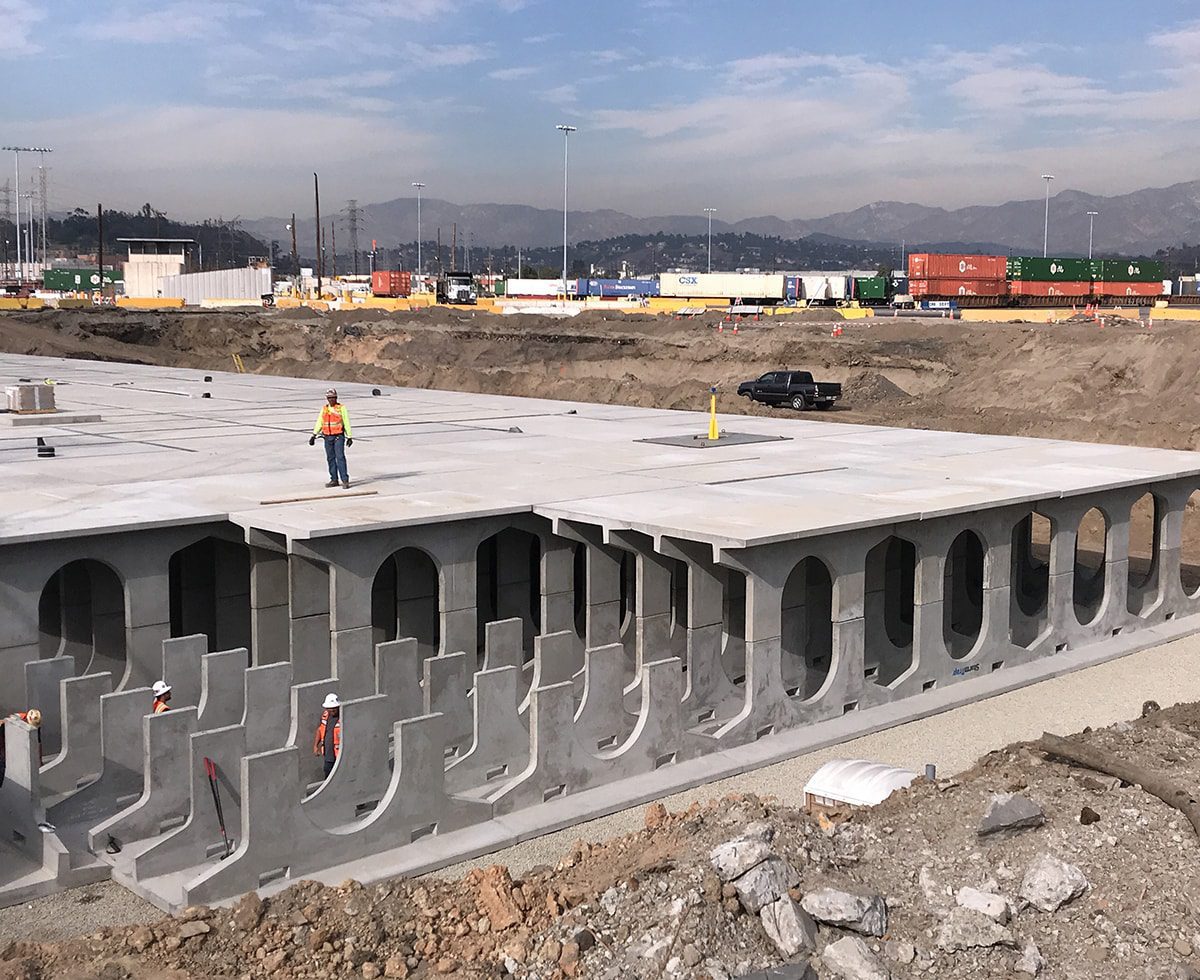LATC Modernization
Project Details
The Los Angeles Transportation Center Intermodal Facility (LATC) has been upgraded with a new road and bridge, enhancing access to the facility. The improvements also include an automated gate entrance, expanded parking areas, and a new drainage system.
The site has been a rail terminal since the early 1900s, and it did not have a stormwater drainage system throughout its yard. A new storm sewer system was installed as part of the modernization of the facility. StormTrap was contacted to help design a large underground stormwater detention system for the site.
The main challenge for this project was that the site had a limited footprint for detention; therefore, underground stormwater management was the only solution to properly manage runoff. In addition, the system had to provide treatment, complying with the Los Angeles Regional Water Quality Control Board (LARWQCB) requirements before water is released to the Los Angeles River.
“StormTrap was chosen for its large vertical clearance allowing a large volume within a small footprint,” stated Brett Garvey, Civil Engineer at TranSystems Corporation. An 11’-4’’ DoubleTrap, capable of storing 873,617 cf total of stormwater, was installed under the yard. Three SiteSaver hydrodynamic separators were also placed upstream of the detention system providing pretreatment.
The SiteSavers designed for this project were composed of a precast concrete structure that housed inclined plates (4, 12, and 12) and baffles to remove suspended sediment and a netting device to capture trash and floating debris. The devices were designed to achieve greater than 80% TSS removal based upon the anticipated particle distribution of the sediment and the design water quality flow rate of 2.95 cfs, 8.86 cfs, and 8.86 cfs, respectively for each unit.
The project was completed in April 2020.
“StormTrap was chosen for its large vertical clearance allowing a large volume within a small footprint.”




